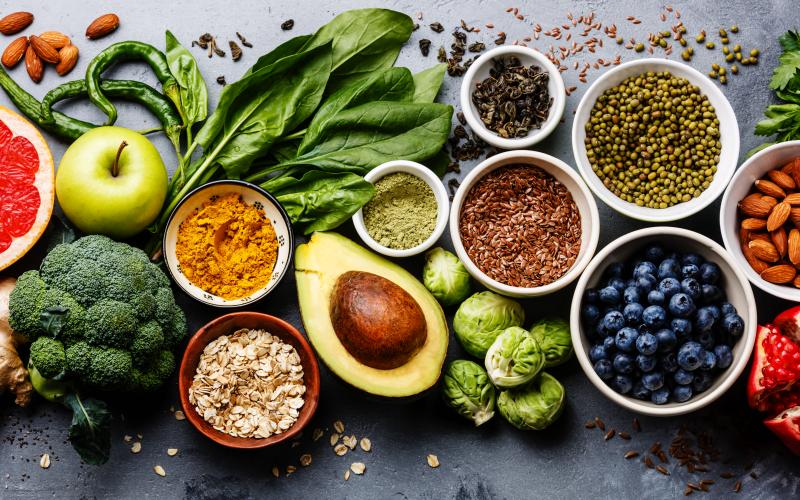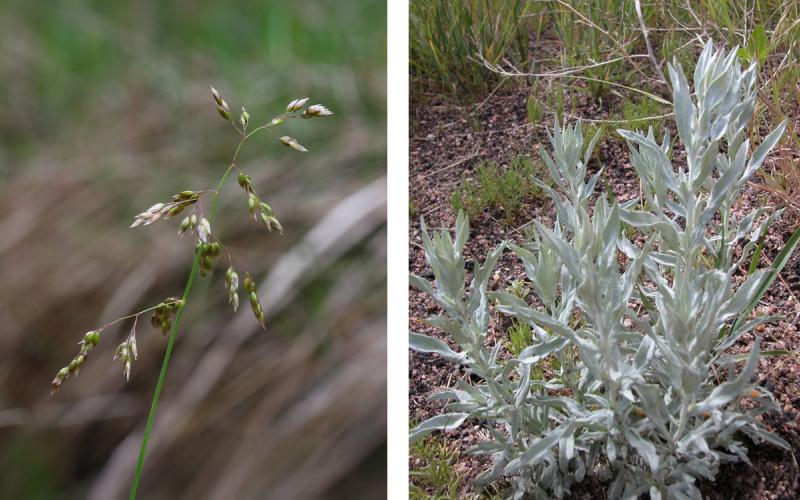Written by Keith Thompson under the direction and review of Megan Erickson, former SDSU Extension Nutrition Field Specialist.
You may have heard or know someone who always speaks about being fatigued, weaker than they once were, or have a difficult time regulating their body temperature. There is a chance that they may be iron deficient. Iron is an essential mineral, meaning we must consume it within our diet. This important mineral has many responsibilities within the human body. The main purpose of iron is to transport oxygen in the blood. Other benefits of meeting iron recommendations are for general energy and focus, gastrointestinal processes, the immune system, and the regulation of body temperature.
How much iron do you need?
Iron recommendations vary based on a person’s gender and age. Here are the current Recommended Dietary Allowances (RDAs) for iron:
|
Gender/Age |
Iron RDA |
|---|---|
| Children 7-12 months | 11 mg |
| Children 1-3 | 7 mg |
| Children 4-8 | 10 mg |
| Children 9-13 | 8 mg |
| Males/ 14-18 | 11 mg |
| Females/ 14-18 | 15 mg |
| Males/ 19+ | 8 mg |
| Females/ 19-50 | 18 mg |
| Females/ 51+ | 8 mg |
Not all iron is created equal
There are two types of iron: heme and non-heme. Heme iron is found in animal foods such as red meat, poultry, and fish. Non-heme iron is found in plant foods such as beans, lentils, and dark leafy greens such as spinach. Animal foods that contain heme iron are better absorbed and utilized in our body. This is why those who follow a vegetarian diet are advised to consume more iron than non-vegetarians. To increase iron absorption in non-heme iron sources (plant foods), vitamin C sources are often consumed in addition to food. There are also foods that block or reduce iron absorption such as coffee, tea, and calcium-rich foods.
Food Sources of Iron
Now that you know more about the two types of iron, what foods contain iron in them? The following table lists common foods that could be consumed to meet your iron recommendations:
| Food Item | Serving Size |
Milligrams (mg) per Serving |
% Daily Value (DV)* |
|---|---|---|---|
| Breakfast Cereals, fortified with 100% DV for iron | 1 serving |
|
|
| White Beans, canned | 1 Cup |
|
|
| Beef Liver, pan fried | 3 ounces |
|
|
| Spinach, boiled and drained | ½ Cup |
|
|
| Cashew Nuts, oil roasted | 1 ounce (18 nuts) |
|
|
| Chicken, roasted, meat and skin | 3 ounces |
|
|
| Broccoli, boiled and drained | ½ Cup |
|
|
| *DV = Daily Value. The U.S. Food and Drug Administration (FDA) developed DVs to help consumers compare the nutrient contents of products within the context of a total diet. The DV for iron is 18 mg for adults and children age 4 years and older1 | |||
For a more comprehensive list of foods containing iron, view this publication from the National Institutes of Health.
Who should ensure adequate iron intake?
It is no secret that we all must consume iron rich foods to reduce the risk of iron deficiency anemia. However, the importance of iron intake is increased for women, children, athletes, and women of child-bearing age. Let’s look at some facts about iron:
- The World Health Organization (WHO) recognizes iron deficiency anemia as one of the most common nutritional problems in both developed and developing countries.2
- Women and children are at the highest risk of iron deficiency.
- Infants require iron for brain development and growth. They generally store enough iron for the first 4-6 months of their life.3
- Iron recommendations for pregnant women increase to 27mg per day to support the development, growth, and provide infant iron stores.4
- Iron supplementation may be needed for pregnant women. Side effects such as constipation and nausea may occur with high doses of iron.
- Pairing a non-heme source (plant) of iron with a heme source (meat) of iron during meals improves absorption.
Iron is an essential mineral that has many different roles in the body. It can be obtained through many food sources, but supplementation may be warranted. Talk to your physician or a Registered Dietitian if you have any concerns. To aim for a well-balanced diet and for more information, visit the Choose MyPlate website.
Sources:
- U.S. Food and Drug Administration. Guidance for Industry: A Food Labeling Guide (14. Appendix F: Calculate the Percent Daily Value for the Appropriate Nutrients). 2013.
- World Health Organization. Prevention of iron deficiency anemia in adolescents. (2017, July 13).
- Kohn, J. (2017, December 14). Iron.
- Turner, H. A. (2015, December 15). Iron in Pregnancy: Maintaining Adequate Intake for Mother and Child.


